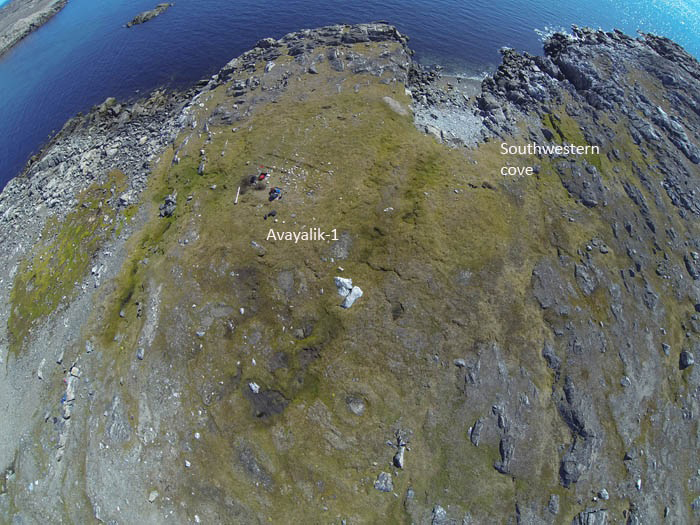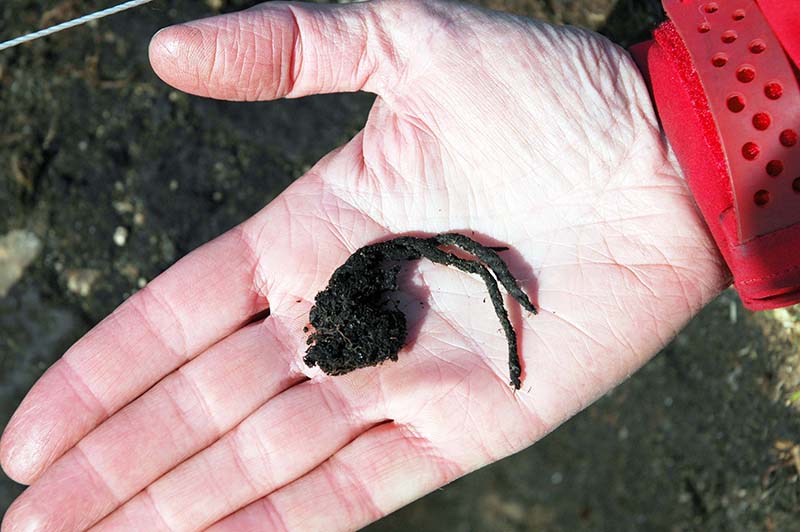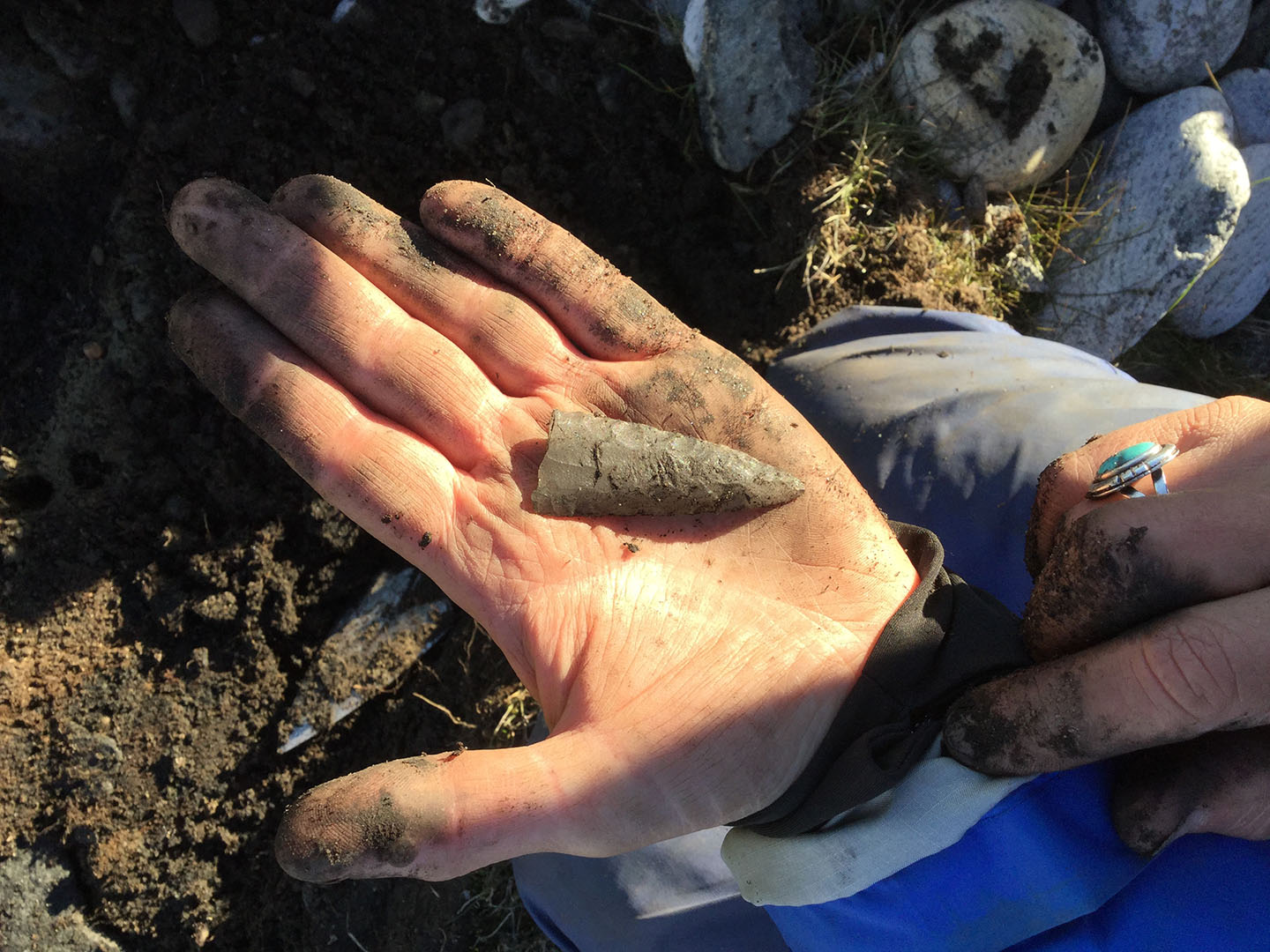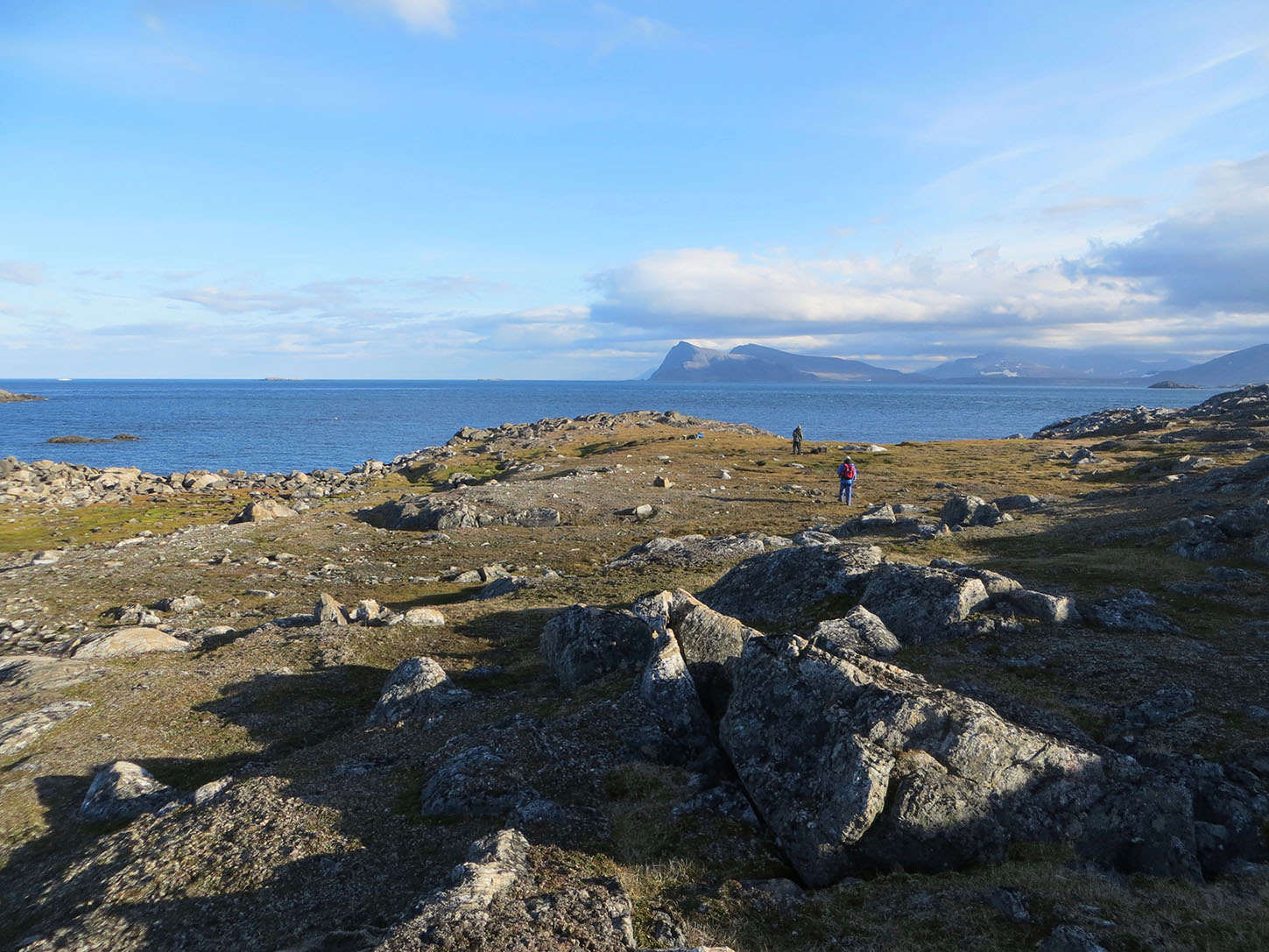An Archaeological Assessment of Avayalik-1

In 1978 archaeologists excavated a Late Dorset house at the site of Avayalik-1 and found frozen Middle Dorset deposits full of artifacts and faunal remains below it. They recovered over one thousand organic artifacts, many unlike any previously found in other Middle Dorset sites in Labrador.
The state of preservation of wood, hide, and bone objects was remarkable, and the finds included many surprises. Fifteen pieces of musk ox cordage caused great excitement as musk ox did not inhabit the region prehistorically, nor had cordage been found in other prehistoric Labrador contexts. Interest in the cordage has continued, with competing theories about its origin. The archaeologists found bundles of baleen that puzzled archaeologists as well, for Dorset people were not known to hunt bowhead whales.
The faunal collection from the site paints a picture of a North Atlantic quite different from the one with which we are familiar. Of particular note was the recovery of bones of two Great Auks, a bird that is now extinct and whose known range had not included northern Labrador.
In 2016, archaeologists Susan Kaplan (Bowdoin archaeologist), Jamie Brake (Nunatsiavut archaeologist), and Moira McCaffrey (independent archaeologist) visited the site to assess its stability in the face of significant warming taking place throughout the region. They determined that this important site, like so many across the Arctic, is in danger due to the effects of global warming. Cultural deposits are thawing and slumping, sending stone and organic artifacts tumbling downslope, and the organic artifacts are disintegrating. Part of the site is also being lost to sea level rise and storm surges that wash artifacts onto the floor of a cove and out to sea.
Analyses of the materials recovered during this short foray to Avayalik Island are continuing as archaeologists consider an action plan to excavate a portion of the site before its important cultural and environmental remains are lost. Analyses of those remains will provide information on past human adaptations to the region and insight into what the North Atlantic was like before the advent of commercial whaling, providing insights regarding human adaptability to one of the most dynamic and challenging environments on earth.
The research was supported by a grant awarded to Susan A. Kaplan by the National Science Foundation (Award No. 1642013), Kane Lodge Foundation, Inc., and Bowdoin College. The field research was conducted under Parks Canada Permit TMNP-2016-22216. The project was carried out in collaboration with Parks Canada, which provided a boat and polar bear guards, and the Nunatsiavut Government, which contributed Jamie Brake’s time.




